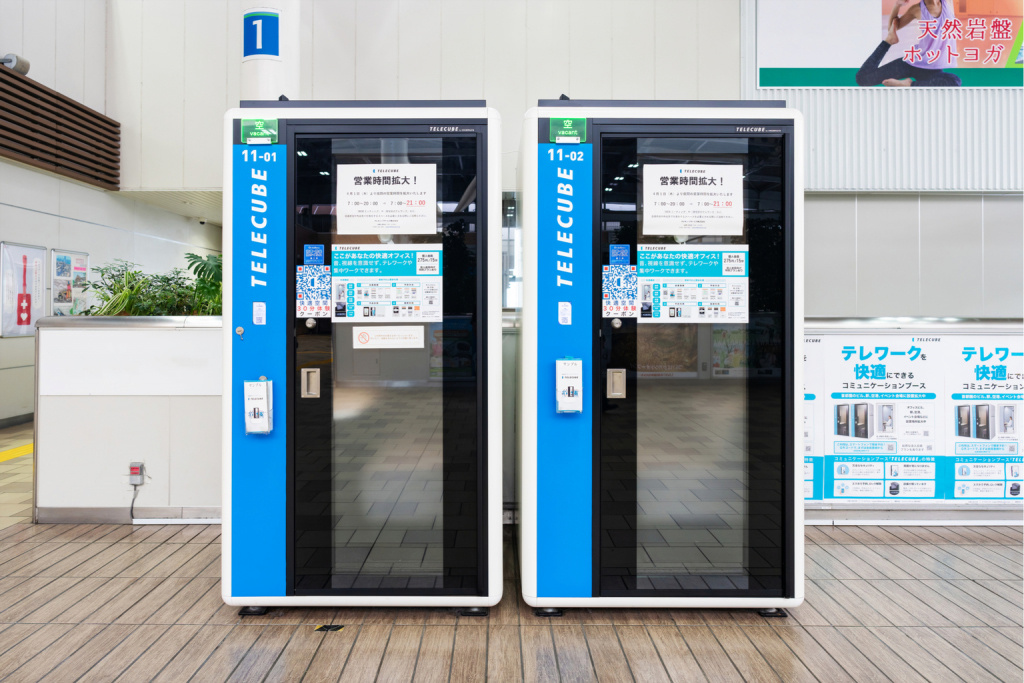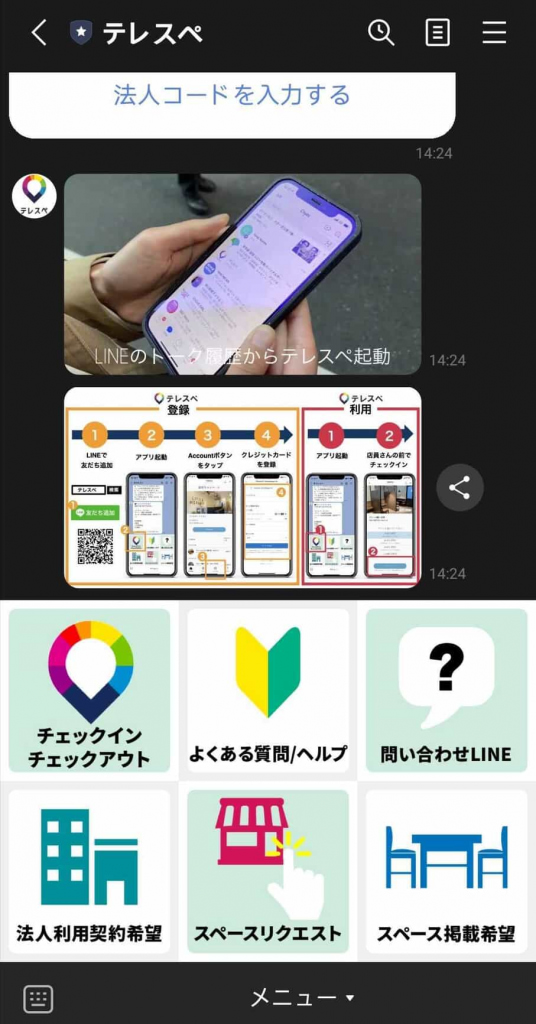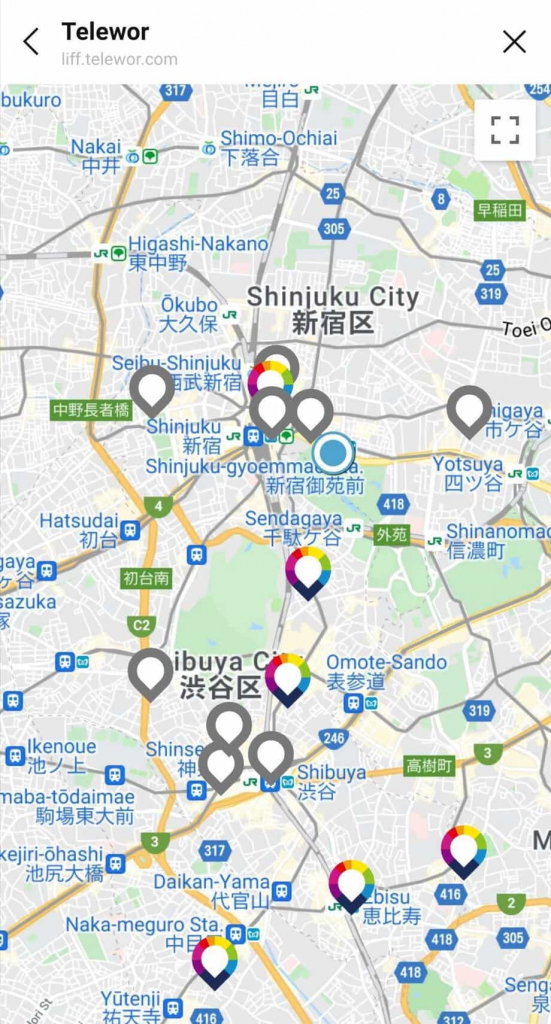The age of remote working finally found its footing in Tokyo over the course of the past year. But if you’re part of this nascent work-from-home crowd you may well be yearning for a workspace not situated within the four walls of your apartment. Some Tokyo remote work options are the tried and tested cafés, libraries and dedicated co-working spaces. But how about working from a phone booth? We tested three unorthodox telework spaces in Tokyo to find out the pros and cons.
1. Telecube: Working in a Booth
Tokyo’s Telecubes are drop-in-drop-out workspaces, shaped like old-school phone boxes, which you can find throughout buildings and train stations in the central city business districts. Booking a Telecube is fairly straightforward: sign up for an account using the website, use the location finder to pick a workspace, then pick a time slot and the duration of your stay.

Editorial credit: Ned Snowman / Shutterstock.com
If it’s your first time using a Telecube, the entry process can be a little unwieldy – especially if your Japanese needs touching up. I’d recommend a translator app that can scan screenshots. When you arrive, log into your account – through the browser, no Telecube app available as yet – and the second the clock strikes your selected time, a button showing the kanji characters for enter (入室) will appear in the bookings section. Hit it, and the door will magically unlock and then re-lock when you jump inside.
From a cursory browse of the various Telecubes across town, it seems they’re not in particularly high demand – though this probably varies from location to location. They’re also well soundproofed. My Telecube was in the busy lobby of the Shibuya Cross Tower, so I can vouch for that. The doors are mostly frosted over giving a degree of privacy. The cubes are kitted out with two charging ports, a USB port, a comfortable seat and a built-in fan.
今日はハシゴで現場→オンライン仕事🙋♀️
いつもなら自宅から🖥だけど、今回は戻る時間なさそうだったので駅付近にあった #telecube ( #テレキューブ )を利用…! 結構サクッと使えたから短時間のオンライン会議やレッスンといったリモートワークの味方になりそう🙌
現代の電話ボックスを見た感じ👽笑 pic.twitter.com/x8MgrjBLol
— 飯月 葉月 IIJIMA HAZUKI : マレーシアテレビ局(TVS)東京リポーター, マレー語屋 (@jima8282) June 2, 2020
The price, however, is a potential issue. ¥500 for 30 minutes. For most people, that would rack up a total of ¥8,000 or more for a full day’s work. That said, Telecubes aren’t really intended for marathon sessions. But if your company or the tax authorities are expensing it, a Telecube may suit as an occasional alternative to slaving over the desk in your bedroom from nine to five. Or at least for a quick virtual meeting.
2. Telespe: Like Airbnb but for Office Space
Telespe operates on the messenger app Line, allowing users to find and book workspaces across Tokyo. The given workspace might be a satellite office, a small space in a café or restaurant, or in my case, a karaoke room in Shinagawa’s Big Echo.
Using GPS, Telespe will suggest a range of telework spots close to you – those in black and white aren’t currently open, those in multicolor are. Most of the locations are central Tokyo remote work offerings, though a few are in further-flung suburbs.
Much like the Telecube, Telespe is a little confusing if you’re not wholly proficient in Japanese. Don’t make the mistake I did by booking before you go – the booking time starts from when you click on the reservation button. You can also make bookings on arrival at selected locations.
Our Pick: Big Echo Karaoke Room
The karaoke room-cum-workspace in Big Echo (room 501) was spacious and soundproofed, bar the drone of an air conditioning unit. It came with solid Wi-Fi and at least four plug sockets. I could hear one or two daytime revelers murdering pop classics as I wandered the halls, but even the most egregious screeches wouldn’t have pierced the walls of the workspace.
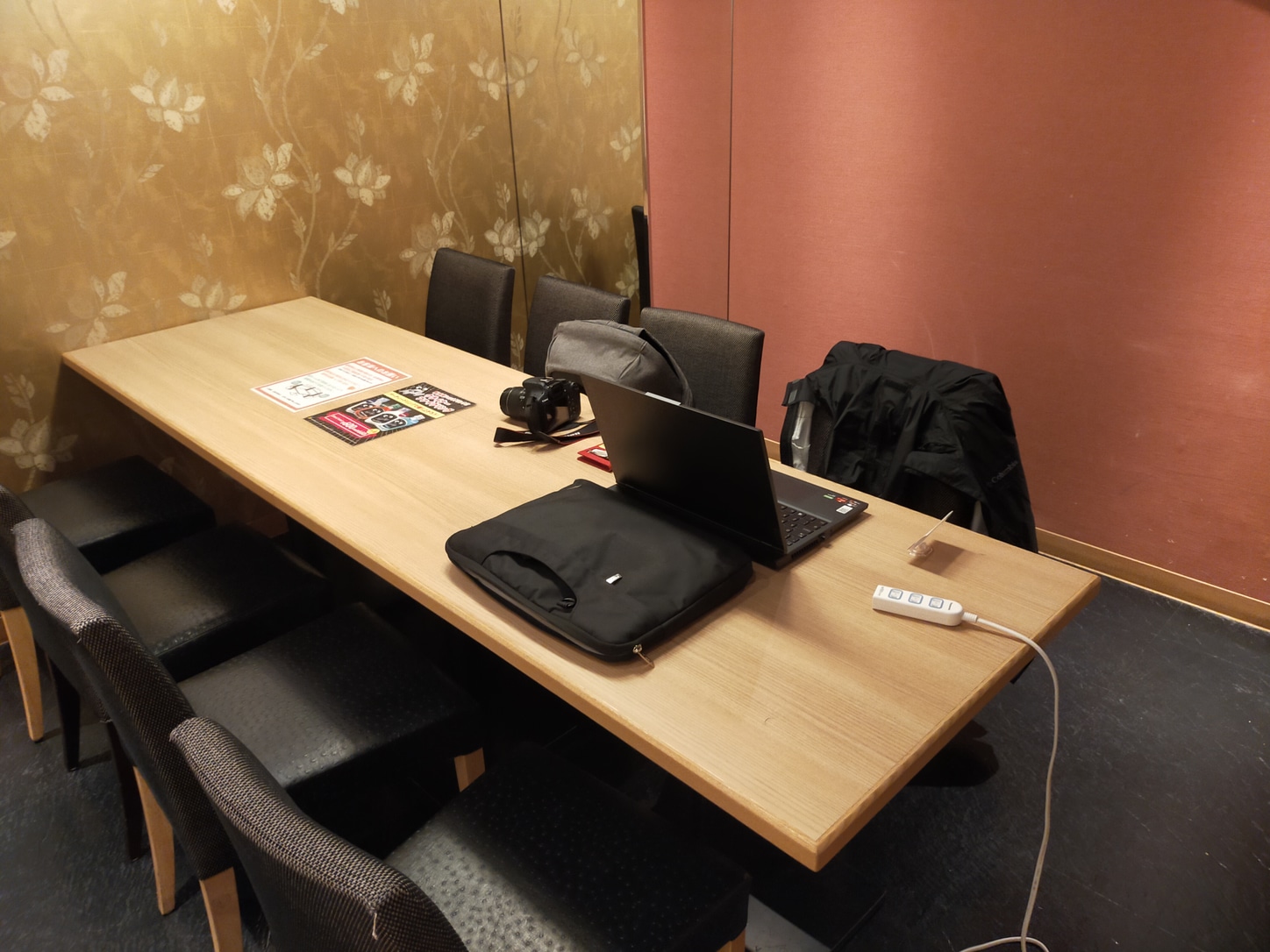
Room 501 in Big Echo Karaoke
A non-alcoholic, all-you-can-drink option was included in the ¥500-per-hour price. Food was also available to order from the karaoke kitchen.
If you prefer working around intrusive background noise with decent quality coffee at the ready, perhaps a café setting is better for you. But if I were in the Shinagawa area again, I’d pay ¥1,000 for a couple of hours in Big Echo without feeling too begrudged.
You can explore available Tokyo remote work options on Telespe if you become their friend on the Line app. Alternatively, you can check their official website.
3. Ueno Grids Hostel: When You Need a Workation
The Ueno Grids Hostel workation plan is definitely the bang-for-your-buck option. For around ¥2,000 (for a shared dorm, private rooms are a little more expensive) you get a bed for the night, and a large, shared workspace and café to use at your leisure. The socially distanced workstations come with several charging sockets and Wi-Fi. The café also has a small kitchen for heating up food or refueling with water or caffeine.

One caveat is that this may not be as private as the other options. However, I was at the hostel on a Friday – presumably one of the busiest days of the week – and still only three other customers were using the workspace. It’s quite roomy too. A couple of guys had set up their desktop computers and various other sci-fi-looking electronics to go with them.
Yet again, don’t make the mistake I did. There are two Grids Hostel locations in the same region of Tokyo. One is in Asakusabashi, which I waltzed into on a blazing summer afternoon, sweating like wagyu on a teppan grill only to realize I was a couple of miles off course. The Ueno location was the one I needed.
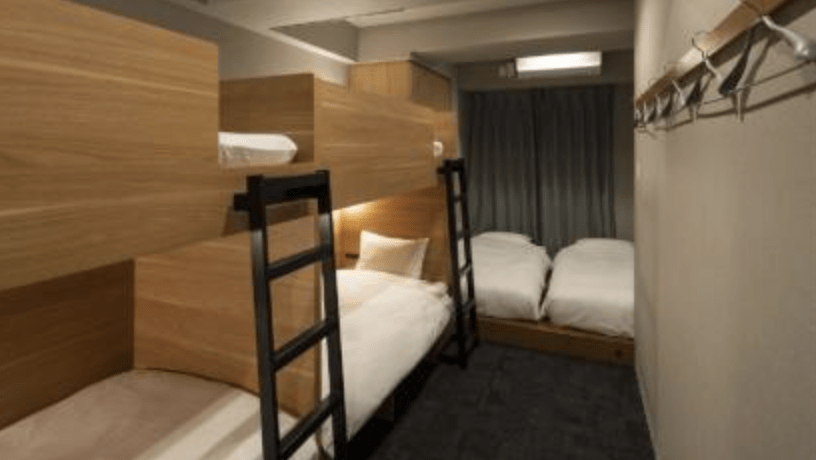
It’s also worth noting there were some other guests in my dorm, which I found a little odd given the size of the hostel and how few people appeared to be staying there. All in all though, the Grids workation option is a bargain when compared with its drop-in-drop-out telework counterparts.
Wherever you choose to do your work, we have some tips and tricks that can help:
The TW Lockdown Mix: When You Need a Chill Playlist For Remote Working
5 Essential Gadgets for Surviving Working From Home
5 Posture Exercises to Help with the Aches of Working from Home
Featured image from Shutterstock by yu_photo
Updated On September 15, 2021

